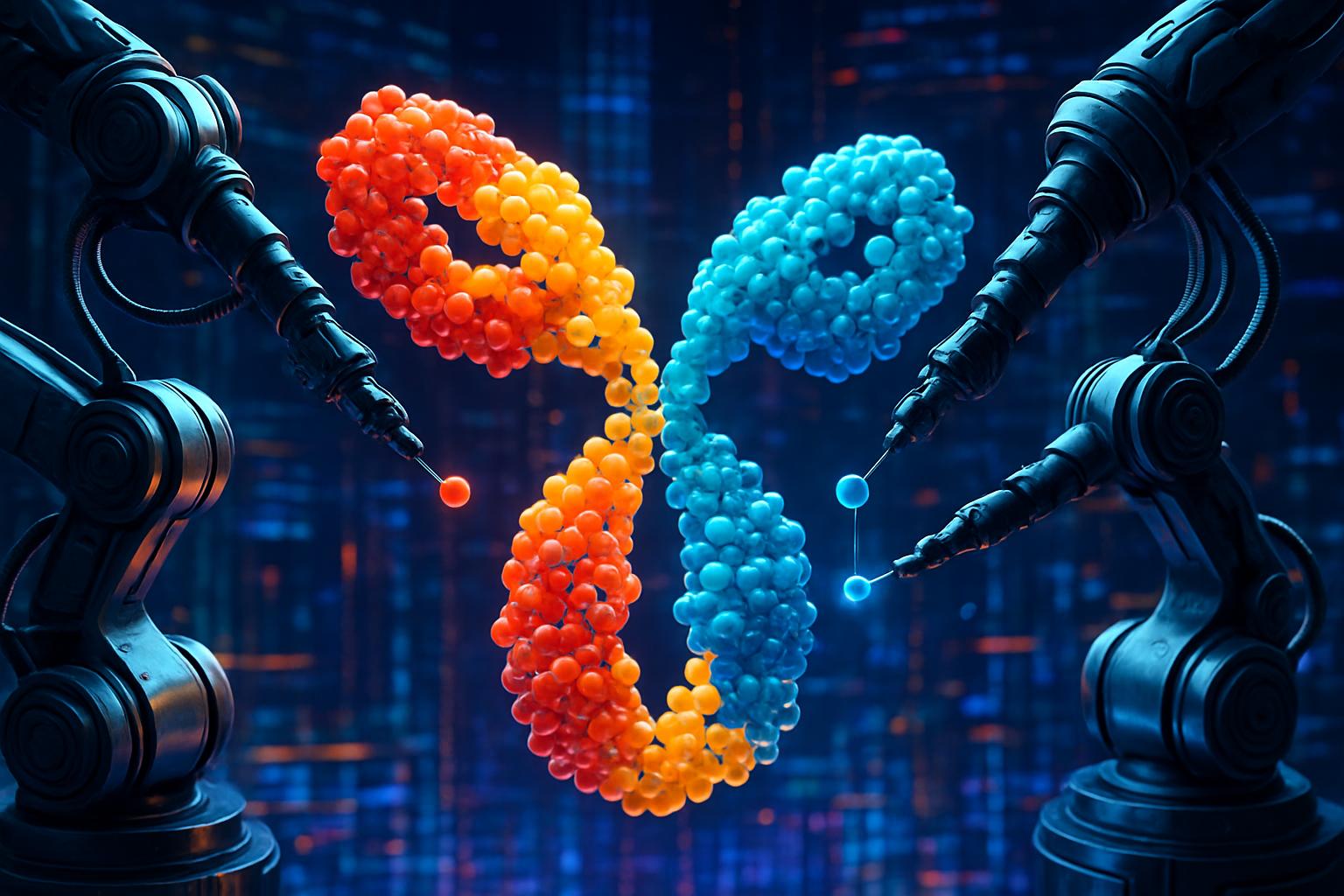
AI CERTS
17 hours ago
Atomic-Precision AI Design Crafts Custom Therapeutic Antibodies
Moreover, the study signals compressed discovery timelines. Therapeutic antibodies once took months to isolate. In contrast, computational pipelines can now propose candidates within days. Therefore, bio-pharma leaders are recalibrating strategies. This article unpacks the science, data, and business stakes behind the breakthrough.

AI Antibody Breakthrough Overview
Initially, the team targeted several high-value epitopes, including influenza HA and SARS-CoV-2 RBD. Subsequently, RFantibody generated variable regions that matched those surfaces. Atomic-Precision AI Design scored early success when cryo-EM maps overlapped the models within sub-Å deviations.
Furthermore, affinity maturation via OrthoRep improved binding to single-digit nanomolar levels. Experiments confirmed functional engagement without loss of specificity. Consequently, reviewers highlighted the pipeline's modularity.
Traditional antibody engineering often requires animal immunization campaigns. Meanwhile, independent immunoinformatics experts praised the structural rigor yet cautioned about translation to clinics. Nevertheless, they agreed the demonstration beats previous benchmarks.
These findings confirm viable, custom binders. However, understanding the underlying pipeline provides deeper insight.
Generative AI Pipeline Explained
Firstly, RFantibody conditions on a three-dimensional antigen and a chosen epitope hotspot. The diffusion network then iteratively denoises random backbones toward conformations that satisfy the constraint.
ProteinMPNN subsequently converts those backbones into amino-acid sequences. Meanwhile, structure predictors validate foldability and interface geometry. Atomic-Precision AI Design appears repeatedly during this loop, ensuring structural fidelity. Modern protein modeling AI accelerates this filtering.
In contrast, traditional antibody engineering screens millions of hybridomas before sequencing hits. Therefore, the generative loop promises radical efficiency upgrades.
Importantly, conditioning signals can include germline frameworks, avoiding liabilities in developability. Consequently, designers steer output toward manufacturable regions.
The method integrates software and wet lab steps seamlessly. Consequently, attention turns to quantitative accuracy.
Measured Atomic Accuracy Data
The Nature paper reports backbone deviations around 0.8 Å for several designs. Additionally, certain CDR loops registered only 0.3 Å RMSD.
Such values sit within experimental error, indicating near-perfect fits. Experts noted that protein modeling AI seldom reaches this consistency for flexible loops. Therefore, Atomic-Precision AI Design sets a new structural benchmark for antibody scaffolds.
Atomic-Precision AI Design achieved these numbers across viral, bacterial, and peptide-MHC targets.
- Sub-Å CDR RMSD for influenza binder, confirming Atomic-Precision AI Design reproducibility.
- Single-digit nanomolar Kd after OrthoRep, outperforming many initial antibody engineering campaigns.
- Weeks rather than months from concept to binder, due to streamlined protein modeling AI workflow.
Collectively, the data translate computational elegance into laboratory reality. Nevertheless, commercial implications deserve review.
Commercial Impact Forecasts Ahead
Therapeutic antibodies generated sales near USD 250 billion in 2023. Moreover, several market reports forecast USD 400 billion by 2030.
Consequently, even minor efficiency gains create enormous value. Atomic-Precision AI Design could shorten discovery cycles, lowering capital risk for startups and incumbents.
Industry players like Absci and Xaira integrate protein modeling AI with automated labs. Additionally, larger firms license academic tools to expand antibody engineering pipelines.
Furthermore, Xaira secured exclusive training code rights while open components remain on GitHub. Investors are watching for fast proof-of-concept leads.
Evaluate Pharma projects nearly 18% compound growth for biologics. Therefore, companies adopting accelerated pipelines may capture disproportionate share.
Competition therefore intensifies across open and proprietary ecosystems. Next, risk management enters the discussion.
Limitations And Governance Concerns
Despite optimism, initial designs hold modest affinities without maturation. Therefore, iterative wet-lab cycles remain essential.
Immunogenicity, manufacturability, and regulatory hurdles still require rigorous testing. In contrast, the computational stage addresses only early risks.
Biosecurity analysts warn that Atomic-Precision AI Design tools might aid malicious actors.
Consequently, policy groups call for synthesis screening, red-teaming, and responsible disclosure. Moreover, dual-use assessments accompany major tool releases.
Meanwhile, the DHS 2024 framework recommends tiered access controls for high-capacity sequence generators. Implementation details remain unsettled.
Governance frameworks must evolve alongside capability growth. Subsequently, professionals consider skill development and certifications.
Future Outlook And Skills
Career paths in computational drug discovery are expanding rapidly. Furthermore, interdisciplinary fluency creates strategic advantage.
Practitioners mastering protein modeling AI and antibody engineering will command premium roles.
Professionals can enhance their expertise with the AI + Healthcare Certification.
Atomic-Precision AI Design will continue to mature, integrating higher-throughput wet labs and generative feedback loops.
Consequently, the workforce must adapt quickly. The following conclusion synthesizes key messages.
Conclusion And Action
Atomic-Precision AI Design now links silicon and cell with unprecedented fidelity. Moreover, supporting automation and analytics continue to mature. Consequently, discovery timelines shrink, while precision improves. Nevertheless, lab validation, regulatory diligence, and governance remain critical. Professionals combining antibody engineering know-how with protein modeling AI will lead this next wave. Finally, readers can accelerate readiness by pursuing the AI + Healthcare Certification. Industry investments already reflect this confidence. Therefore, early adoption offers strategic and financial upside. Meanwhile, policy frameworks will clarify acceptable use and safeguard innovation. Stakeholders should monitor guidance, contribute feedback, and share best practices.



